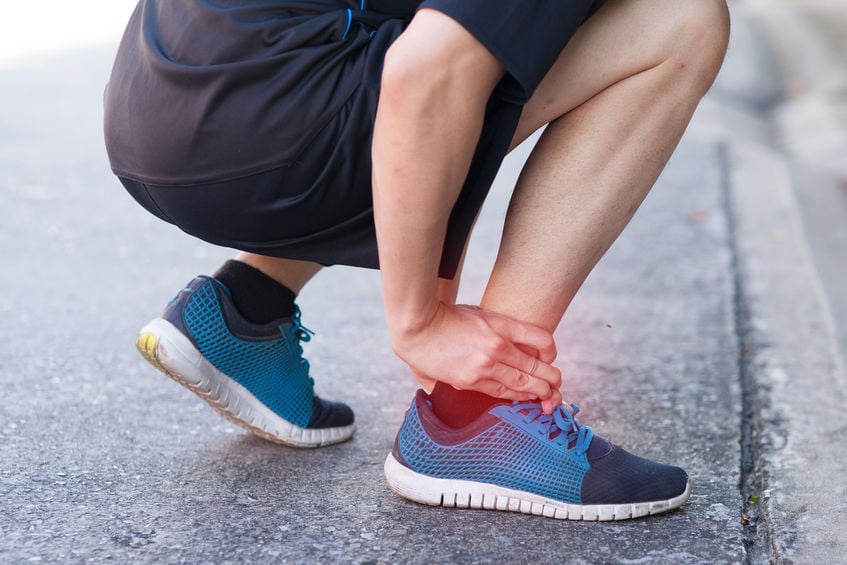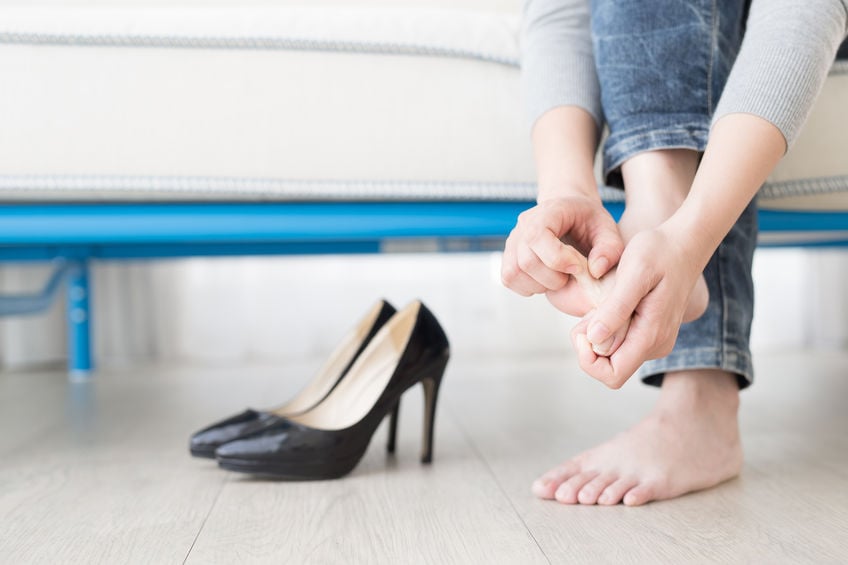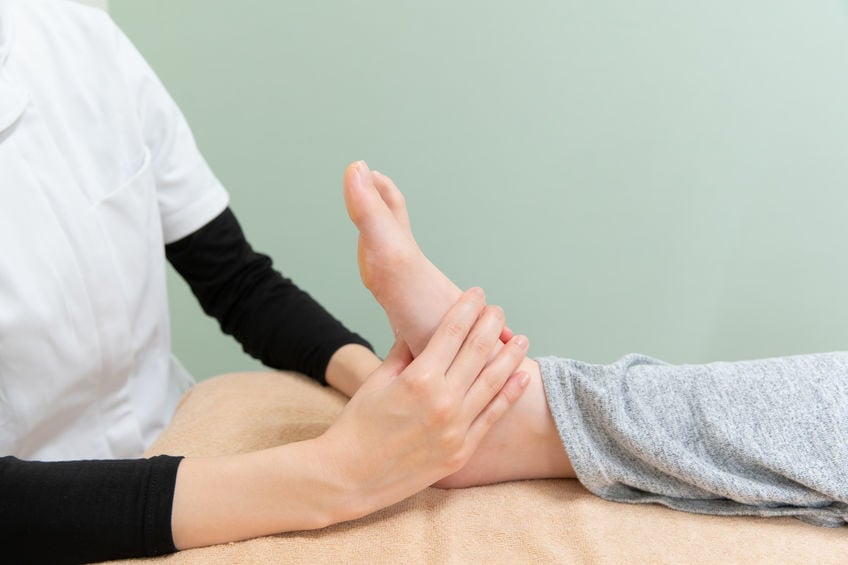Understanding The Achilles Tendon
The Achilles tendon is the largest and one of the strongest tendons in the body. The Achilles starts at the lower calf and connects the calf muscle to the heel bone. This tendon is essential for jumping, stretching, running, and walking. Because of the amount of force exerted, the tendon is prone to injury. Achilles injuries affect almost 2 million persons yearly. However, the most common issue is Achilles tendinitis.

What is Achilles tendinitis?
Occasionally, the Achilles can become inflamed. Inflammation is commonly known as Achilles tendinitis. There are 2 types of tendinitis. Insertional tendonitis is inflammation of the tendon at the point of the heel bone. Persons will feel pain and tenderness at the back of the heel. This could be acute or chronic pain and can often be caused by bone spurs. With non-insertional Achilles tendinitis, the pain is more central as the middle of the tendon becomes inflamed. This is common in younger persons.
Signs of tendinitis
Persons with tendinitis will experience pain and tenderness in the heel area. The pain shows up particularly in the morning or with excess movement. Swelling and stiff calf muscles are also tell-tale signs. The discomfort can also be situational, for example, after exercise or a long day of walking. In severe cases, a small bump can develop at the heel. Not everyone has or will experience Achilles tendinitis. However, there are some common risk factors to know.
There's such a thing as too active
Active persons, especially high-performance athletes, are more prone to the condition. More than 50% of all Achilles injuries are sports-related. Excessive running or jumping can cause occasional swelling and inflammation. Some persons taking on a new physical activity, especially without warming up, can get tendinitis. In short, overuse is the most significant risk factor for Achilles tendinitis. While the Achilles was made for high effort, persons will be at risk if neglecting proper stretching and rest.
Look out for a gradual breakdown
Like any other tendon, wear-and-tear is a possible risk factor. Both the Achilles and surrounding muscles will degrade with age. This causes inflammation with simple tasks like walking. Including other factors like weight, lack of exercise, and weak leg muscles, put persons at a high risk of injury.
Disease and tendinitis
Some doctors and researchers have found links with Achilles injury and some diseases or disorders. Diabetes, thyroid issues, lupus, and collagen deficiencies are some examples. Types of arthritis like rheumatoid arthritis and gout are also risk factors. Persons with these conditions should be especially aware of tendinitis symptoms.
Beware what you wear
Can a pair of shoes cause Achilles tendinitis? The tendon contributes to bearing the weight of the rest of the body. Wearing the wrong shoes can place stress on the muscle, causing tendinitis. Women who wear high heels for long periods are also prone to inflammation.
Rest is best
If the heel pain and symptoms continue to be constant, see a doctor immediately. Using simple tests or scans, the doctor will be able to confirm or rule out tendinitis. Luckily, doctors help resolve most tendinitis cases with simple treatment. Rest is the first and best step for relieving tendinitis. Using the RICE method, a combination of rest, ice, compression, and elevation, can resolve the issue. For persons with the wrong footwear, wearing orthopedic shoes, heel lifts, or braces can bring long-term relief.
Taking treatment up a notch
If the pain is a bit more severe, a doctor will recommend NSAIDs and painkillers to reduce inflammation and pain. Physical therapy is another step in the treatment process. This is a series of exercises and stretches to improve strength and flexibility. Physical therapy can also reduce inflammation and pressure on the surrounding muscles. In some severe but rare cases, a doctor may consider steroid injections or surgery. If managed well by the patient, tendinitis can be treated non-surgically.
Treat the Achilles right
Achilles tendinitis is one of the most common leg and foot conditions treated by doctors. The tendon is an integral part of support and movement. Prevent injury with the right exercise, stretching, footwear, and rest. Anyone at risk and experiencing symptoms should seek medical advice to prevent further damage.
Can Lower Back Pain Return After Spinal Surgery? 3 Lifestyle Changes To Get The Most Out Of Fusion
Minnesota Valley Valley Center2024-04-02T14:49:38-05:00April 15th, 2024|
Spinal surgery is an excellent solution for lower back pain, but symptoms can return. With lifestyle changes, patients can get the most out of fusion.
A New Lease On Life: Exploring How Robotic Total Joint Replacement Can Get You Active Again
Minnesota Valley Valley Center2024-03-24T17:38:47-05:00March 29th, 2024|
Robotic total joint replacement uses a robotic arm to replace the joint. This innovative approach allows a quick return to activities.
Restoring Dexterity: How Outpatient Carpal Tunnel Surgery Can Change Your Life
Minnesota Valley Valley Center2024-03-24T17:38:37-05:00March 15th, 2024|
After months of wrist and hand pain, carpal tunnel surgery may be needed. With outpatient options, restored dexterity with less pain and discomfort is possible.
More Articles from MVSC
December 14, 2023
Ankle pain is common, but sometimes arthritis is at play. An orthopedic surgeon may recommend subtalar fusion for patients.
November 28, 2023
Is bunionectomy a solution for foot pain caused by bunions? Learn about surgical and non-surgical options before a decision.
September 26, 2023
An Achilles tendon recovery timeline can be long and grueling. With rest and physical therapy, patients can see faster results.
September 19, 2023
Big toe arthritis can cause severe discomfort if left untreated. Hallux rigidus repair can provide extensive relief for patients.










